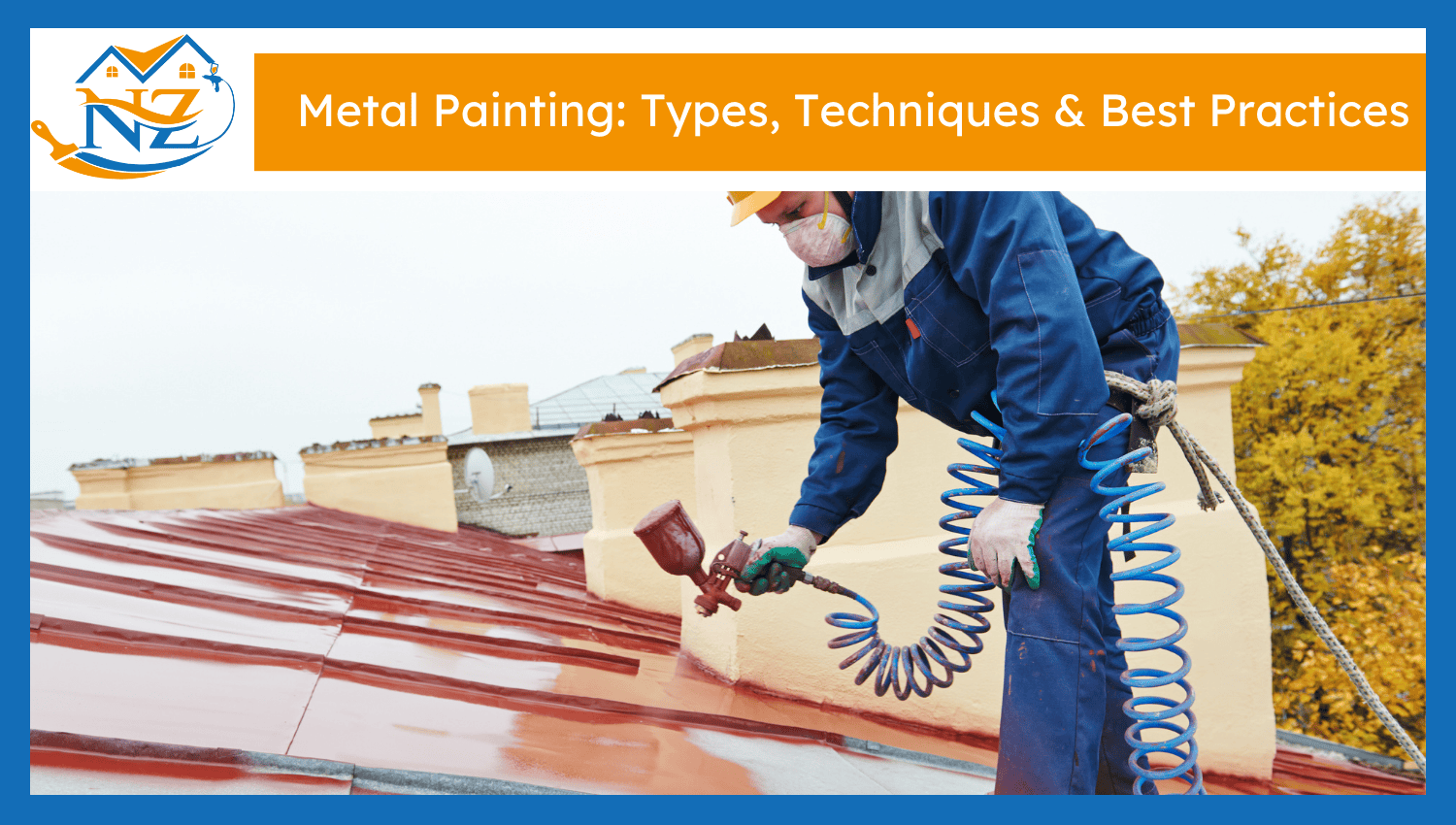

Metal painting is a process of applying layers of paint to protect metal surfaces. It stops corrosion, protects against weather and enhances the surface’s appearance. The process is frequently applied to industrial equipment, fencing, railings and various auto parts.
It makes the coating long-lasting so it stays protected from moisture, UV rays and scratches. Painted metals are more durable and do not need much care. It offers the chance to alter both the texture and colour of your creation. The coating creates a smooth surface that connects well with surfaces that have been primed. Painting metal helps to preserve the structure of these components and protects them in tough settings.
The following are the 4 common types of metal surfaces:
Steel is a tough material commonly used in building frames, furniture, and tools. Stainless steel contains iron, so it needs protection to avoid rust.
Preparing a steel surface for painting includes removing rust and coating it with a primer that resists rust. Oil-based or enamel paints achieve a hard and lasting finish. Painting steel makes it easy to clean and also works well in all environments.
Aluminum is not heavy, can’t rust, and is usually used in windows, doors, and balcony furniture. The surface stays rust-free, but it is not easy for paint to stick. The first steps in aluminum surface painting are etching and priming with a primer designed for this material. Acrylic or latex paint is the kind that artists usually choose. Aluminum that is painted remains attractive even in outdoor environments.
The metal iron is strong and weighty, making it suitable for use in gates, railings, and antique items. The metal rusts quickly when it comes into contact with moisture. It is important to clean all the rust from the iron surface before painting. A good primer gives the surface added protection before the paint goes on. Oil-based or spray paints give iron a smooth and shiny layer, and they also protect its surface.
Galvanized metal has a zinc coating to prevent rust from forming. It can be found in roofing, fencing, and ducts. The first coat of paint may not stick to the metal if you don’t prep it properly. Using a unique primer or giving the galvanized surface a light sanding is necessary to ensure the paint sticks well. Acrylic and latex paints are the most suitable. Proper preparation of a galvanized area provides a neat finish that lasts.
Below are the 4 essential metal painting techniques:
The initial step to painting metal is to properly prepare the surface. The first step is to clear any rust, dust, oil, and outdated paint to leave a clean surface. You can use sandpaper, wire brushes, and degreasers to make the surface smooth and free of any dirt. If you properly prepare the surface, peeling won’t happen, and the paint sticks better. Surface preparation ensures the paint is secure and resistant to weather conditions.
Priming ensures that the metal and paint stick together well. It coats the surface to help with rust and corrosion protection. Different paint chemicals are needed for aluminum, galvanized metals, and steel or iron. After finishing the cleaning and drying, use a primer to create a smooth surface. If you skip this part, your paint job is likely to fail quickly.
Painting metal is possible using a brush, roller, or sprayer. A brush is good for painting small or delicate areas. Rollers are faster on large, even surfaces, whereas spray painting produces the best and smoothest results. The best outcomes come from applying several thin layers of paint. Don’t apply too much to avoid drips. The choice of technique is influenced by how smooth or bumpy the metal is and by its shape.
Protective coatings cover the painted metal to shield it from moisture, UV light, and scratches. A clear topcoat is added to the paint to increase shine and make the finish tougher. Weatherproof coating is important for keeping outdoor paint free from fading and chipping. They increase the paint’s service life and help save the metal surface. The last step before you start painting is to apply a protective layer.
Here are the 3 best practices to ensure a clean finish of metal surface painting:
The kind of paint you select depends on the type of metal and its state of exposure. Make sure to use rust-proof paint, such as oil-based or enamel paints, on metal surfaces. If you choose aluminum or galvanized metal, apply acrylic or a type of acrylic paint designed for metal to achieve a good finish. Always use a paint that matches the primer you have chosen. The right material improves both the durability and the way the building looks.
A strong and even coat is possible when you layer your finish correctly. Apply a suitable primer and then complete your piece with one or two paint coats. Paint each layer of the paint on smoothly and evenly so there are no runs or bubbles. After all the other layers are done, seal your painting with a clear protector. Make sure that every coat dries well before you go on to the next one. Adding layers to the paint adds to its beauty and durability.
Drying helps the paint solidify, but curing makes it stronger. Put painted metal somewhere with good ventilation to ensure it dries well. Every kind of paint requires a certain amount of drying, as this is essential for its durability. A quick spraying process usually results in soft or damaged finishes. When the paint dries and cures properly, it forms a strong connection to the surface.